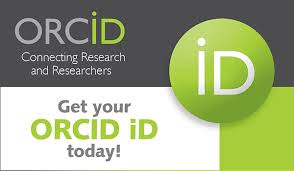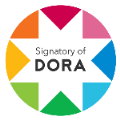Protocolos para el manejo de la anafilaxia y el shock anafiláctico en el consultorio odontológico: revisión de la literatura
Resumen
La anafilaxia y el shock anafiláctico son reacciones alérgicas sistémicas potencialmente mortales. Aunque poco frecuentes en odontología, muchos de los insumos utilizados en la práctica clínica pueden actuar como alérgenos. Además, la inadecuada capacitación de los profesionales odontológicos para el manejo de este tipo de emergencias, incrementa el riesgo de complicaciones graves. El objetivo del presente estudio fue describir los protocolos actualizados para el manejo de la anafilaxia y el shock anafiláctico en el consultorio odontológico, mediante una revisión de la literatura. Se realizó una revisión de la literatura en PubMed, SciELO y Google Scholar, utilizando descriptores DeCS y MeSH relacionados con anafilaxia, shock anafiláctico y odontología, seleccionando mediante los criterios de inclusión y exclusión los artículos más relevantes. Los principales agentes desencadenantes en odontología incluyen anestésicos locales, antibióticos, clorhexidina, látex, diversos componentes de las soluciones yodadas y metales. El manejo efectivo depende de la identificación temprana del cuadro, la suspensión del agente causal y la administración inmediata de adrenalina como tratamiento de primera línea, complementado con oxígeno y fluidoterapia. En conclusión, una actuación rápida y precisa, la capacitación continua, la implementación de protocolos estandarizados y la disponibilidad de insumos adecuados por parte del odontólogo, son esenciales para garantizar una respuesta efectiva y salvaguardar la vida del paciente.
Palabras clave
Referencias
Arsati, F., Montalli, V., Flório, F., Ramacciato, J., da Cunha, F., Cecanho, R., de Andrade, E., & Motta, R. (2010). Brazilian dentists’ attitudes about medical emergencies during dental treatment. Journal of dental education, 74(6), 661–666. https://onlinelibrary.wiley.com/doi/abs/10.1002/j.0022-0337.2010.74.6.tb04912.x
Bălan, H., & Gurghean, A. (2015). Anaphylactic shock: are we doing enough and with the right timing and order? Romanian Journal Of Internal Medicine, 53(3), 191–198. https://doi.org/10.1515/rjim-2015-0026
Bastidas, J., Mautong, H., Borrero, G., Robles, K., Intriago, B., Martin, J., & Cherrez, I. (2022). Knowledge of anaphylaxis management among latin american dentists. Annals of Allergy, Asthma & Immunology, 129(5), 1–1. https://doi.org/10.1016/j.anai.2022.08.559
Böhm, I., Nairz, K., Morelli, J., Keller, P., & Heverhagen, J. (2017). Iodinated Contrast Media and the Alleged “Iodine Allergy”: An Inexact Diagnosis Leading to Inferior Radiologic Management and Adverse Drug Reactions. RöFo - Fortschritte auf dem Gebiet der Röntgenstrahlen und der bildgebenden Verfahren, 189(04), 326–332. https://doi.org/10.1055/s-0042-122148
Bustamante, R. (2021). Anafilaxia y shock anafiláctico. Revista Chilena de Anestesia, 50(1), 1–29. https://doi.org/10.25237/revchilanestv50n01-04
Carlson, J., Cook, S., Djarv, T., Woodin, J., Singletary, E., & Zideman, D. (2020). Second Dose of Epinephrine for Anaphylaxis in the First Aid Setting: A Scoping Review. Cureus, 12(11), 1–8. https://doi.org/10.7759/cureus.11401
Cherrez, I., Gallardo, J., Borrero, G., Mautong, H., Silva, P., Sarfraz, Z., Sarfraz, A., Cano, L., & Robles, K. (2024). Knowledge and attitudes toward anaphylaxis to local anesthetics in dental practice. BDJ Open, 10(1), 1–6. https://doi.org/10.1038/s41405-024-00210-x
Dispenza, M. (2019). Classification of hypersensitivity reactions. Allergy and Asthma Proceedings, 40(6), 470–473. https://doi.org/10.2500/aap.2019.40.4274
Girdler, N., & Smith, D. (1999). Prevalence of emergency events in British dental practice and emergency management skills of British dentists. Resuscitation, 41(2), 159–167. https://doi.org/10.1016/S0300-9572(99)00054-4
Golden, D., Wang, J., Waserman, S., Akin, C., Campbell, R., Ellis, A., Greenhawt, M., Lang, D., Ledford, D., Lieberman, J., Oppenheimer, J., Shaker, M., Wallace, D., Abrams, E., Bernstein, J., Chu, D., Horner, C., Rank, M., Stukus, D., … Wang, J. (2024). Anaphylaxis: A 2023 practice parameter update. Annals of Allergy, Asthma & Immunology, 132(2), 124–176. https://doi.org/10.1016/j.anai.2023.09.015
Goto, T. (2023). Management of Anaphylaxis in Dental Practice. Anesthesia Progress, 70(2), 93–105. https://doi.org/10.2344/anpr-70-02-16
Greenhawt, M., Lieberman, J., Blaiss, M., Bernstein, D., Oppenheimer, J., DuBuske, L., Fleischer, D., & Dworaczyk, D. (2024). Pharmacokinetic and Pharmacodynamic Profile of Epinephrine Nasal Spray Versus Intramuscular Epinephrine Autoinjector in Healthy Adults. The Journal of Allergy and Clinical Immunology: In Practice, 12(12), 3274–3282. https://doi.org/10.1016/j.jaip.2024.10.006
Harper, N., Cook, T., Garcez, T., Farmer, L., Floss, K., Marinho, S., Torevell, H., Warner, A., Ferguson, K., Hitchman, J., Egner, W., Kemp, H., Thomas, M., Lucas, D., Nasser, S., Karanam, S., Kong, K., Farooque, S., Bellamy, M., & McGuire, N. (2018). Anaesthesia, surgery, and life-threatening allergic reactions: epidemiology and clinical features of perioperative anaphylaxis in the 6th National Audit Project (NAP6). British Journal of Anaesthesia, 121(1), 159–171. https://doi.org/10.1016/j.bja.2018.04.014
Jevon, P., & Shamsi, S. (2020). Management of anaphylaxis in the dental practice: an update. British Dental Journal, 229(11), 721–728. https://doi.org/10.1038/s41415-020-2454-1
Kazem, M., Shokri, F., Fozooni, B., & Shokri, M. (2025). Respiratory and Pulmonary Allergic Emergencies in Dental and Periodontal Surgery: A Systematic Review of Identification, Management, and Prevention Strategies. Bulletin of emergency and trauma, 13(3), 127–139. https://doi.org/10.30476/beat.2025.106326.1592
Kazempour, M., Shokri, F., & Shokri, M. (2025). Comprehensive management evaluation of anaphylactic shock in dental clinics across developing countries. International Journal of Emergency Medicine, 18(1), 57. https://doi.org/10.1186/s12245-025-00840-4
Kraus, C., Wargacki, S., Golden, D., Lieberman, J., Greenhawt, M., & Camargo, C. (2025). Integrated phase I pharmacokinetics and pharmacodynamics of epinephrine administered through sublingual film, autoinjector, or manual injection. Annals of Allergy, Asthma & Immunology, 134(5), 580–586. https://doi.org/10.1016/j.anai.2025.01.006
Krishna, M., York, M., Chin, T., Gnanakumaran, G., Heslegrave, J., Derbridge, C., Huissoon, A., Diwakar, L., Eren, E., Crossman, R., Khan, N., & Williams, A. (2014). Multi-centre retrospective analysis of anaphylaxis during general anaesthesia in the United Kingdom: aetiology and diagnostic performance of acute serum tryptase. Clinical and Experimental Immunology, 178(2), 399–404. https://doi.org/10.1111/cei.12424
Marinho, S. (2018). Perioperative anaphylaxis - Time for a NAP 6! Clinical & Experimental Allergy, 48(10), 1252–1254. https://doi.org/10.1111/cea.13259
Martinez, D., Yévenes, S., & Rodríguez, C. (2020). Alergias en la atención dental. Odontología Sanmarquina, 23(4), 435–443. https://doi.org/10.15381/os.v23i4.17927
Mertes, P., Alla, F., Tréchot, P., Auroy, Y., & Jougla, E. (2011). Anaphylaxis during anesthesia in France: An 8-year national survey. Journal of Allergy and Clinical Immunology, 128(2), 366–373. https://doi.org/10.1016/j.jaci.2011.03.003
Nunes, F., Zanini, F., Braga, C., da Silva, A., Fernandes, F., Solé, D., & Wandalsen, G. (2022). Incidence, triggering factors, symptoms, and treatment of anaphylaxis in a pediatric hospital. World Allergy Organization Journal, 15(9), 1–8. https://doi.org/10.1016/j.waojou.2022.100689
Obata, K., Naito, H., Yakushiji, H., Obara, T., Ono, K., Nojima, T., Tsukahara, K., Yamada, T., Sasaki, A., & Nakao, A. (2021). Incidence and characteristics of medical emergencies related to dental treatment: a retrospective single‐center study. Acute Medicine & Surgery, 8(1), 1–7. https://doi.org/10.1002/ams2.651
Patel, N., Chong, K., Yip, A., Ierodiakonou, D., Bartra, J., Boyle, R., & Turner, P. (2021). Use of multiple epinephrine doses in anaphylaxis: A systematic review and meta-analysis. Journal of Allergy and Clinical Immunology, 148(5), 1307–1315. https://doi.org/10.1016/j.jaci.2021.03.042
Pouessel, G., & Neukirch, C. (2025). Alternatives to Injectable Adrenaline for Treating Anaphylaxis. Clinical and experimental allergy: journal of the British Society for Allergy and Clinical Immunology, 55(1), 36–51. https://doi.org/10.1111/cea.14598
Raftu, M., & Zhan, S. (2018). Hipersensibilidad a los Metales en Odontología. Psychologia Latina, 377–380. https://psicologia.ucm.es/data/cont/docs/29-2019-02-15-Raftu.pdf
Rodriguez, Y., Mena, P., & Wong, L. (2023). Diagnóstico y manejo de reacciones alérgicas a anestésicos locales por estudiantes de odontología en prácticas preprofesionales. Revista de Ciencias Médicas de Pinar del Río, 27(1), 1–13. http://scielo.sld.cu/pdf/rpr/v27s1/1561-3194-rpr-27-s1-e6081.pdf
Smereka, J., Aluchna, M., Aluchna, A., & Szarpak, Ł. (2019). Preparedness and attitudes towards medical emergencies in the dental office among Polish dentists. International Dental Journal, 69(4), 321–328. https://doi.org/10.1111/idj.12473
DOI: https://doi.org/10.23857/pc.v10i11.10652
Enlaces de Referencia
- Por el momento, no existen enlaces de referencia
Polo del Conocimiento
Revista Científico-Académica Multidisciplinaria
ISSN: 2550-682X
Casa Editora del Polo
Manta - Ecuador
Dirección: Ciudadela El Palmar, II Etapa, Manta - Manabí - Ecuador.
Código Postal: 130801
Teléfonos: 056051775/0991871420
Email: polodelconocimientorevista@gmail.com / director@polodelconocimiento.com
URL: https://www.polodelconocimiento.com/













